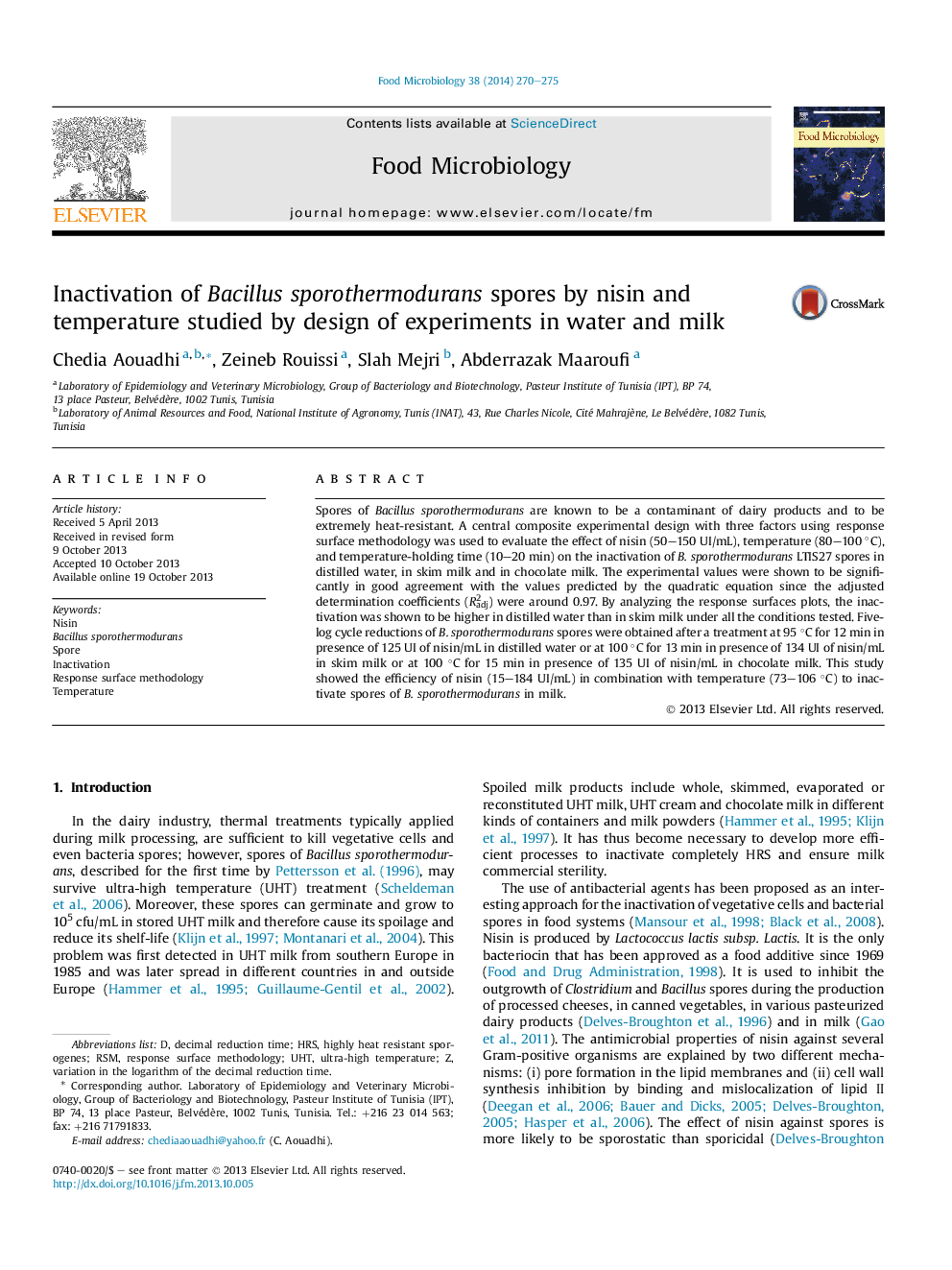| Article ID | Journal | Published Year | Pages | File Type |
|---|---|---|---|---|
| 4362943 | Food Microbiology | 2014 | 6 Pages |
•Heat-resistant endospores of Bacillus sporothermodurans were submitted to temperature and nisin.•5-log cycle reduction of spores was calculated using the developed model, to create surface responses in water and milk.•Inactivation of B. sporothermodurans spores was more efficient in distilled water than in milk.•Nisin amplifies the efficiency of temperature to inactivate spores of B. sporothermodurans.
Spores of Bacillus sporothermodurans are known to be a contaminant of dairy products and to be extremely heat-resistant. A central composite experimental design with three factors using response surface methodology was used to evaluate the effect of nisin (50–150 UI/mL), temperature (80–100 °C), and temperature-holding time (10–20 min) on the inactivation of B. sporothermodurans LTIS27 spores in distilled water, in skim milk and in chocolate milk. The experimental values were shown to be significantly in good agreement with the values predicted by the quadratic equation since the adjusted determination coefficients (Radj2) were around 0.97. By analyzing the response surfaces plots, the inactivation was shown to be higher in distilled water than in skim milk under all the conditions tested. Five-log cycle reductions of B. sporothermodurans spores were obtained after a treatment at 95 °C for 12 min in presence of 125 UI of nisin/mL in distilled water or at 100 °C for 13 min in presence of 134 UI of nisin/mL in skim milk or at 100 °C for 15 min in presence of 135 UI of nisin/mL in chocolate milk. This study showed the efficiency of nisin (15–184 UI/mL) in combination with temperature (73–106 °C) to inactivate spores of B. sporothermodurans in milk.
